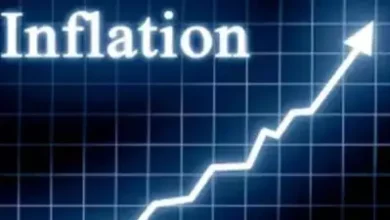CRISIL reports that cement volume growth bounces back to 7-8% in Q4FY24, with low prices supporting year-over-year profitability
According to a CRISIL assessment, cement volume growth rebounded to 7-8% on-year in the last quarter of fiscal 2024, after an almost 15% on-year rise in the first half and a minor slowdown in the third quarter as a result of regional obstacles. It was said that this was fueled by an aggressive volume push.

This made sure that demand would climb steadily for the third year in a row in fiscal 2024, reaching over 441 million tonne (MT) at a rate of almost 11%. According to CRISIL MI&A Research, demand growth is predicted to slow to 6-7 percent in the fiscal year 2025 from this high base.
Nonetheless, the analysis upheld that rising supply and growing competition in the market caused pan-Indian cement prices to plummet in the second half of the fiscal year. It said that in the five months (November 2023–March 2024) following the last price increase in October 2023, prices had dropped by Rs 40–45 per bag.
CRISIL said that January and February of this year did not witness consistent price increases, highlighting the high level of competition in the market and going against the tradition of firm pricing in the first few months of the fourth quarter and a price decrease in March as a result of the year-end volume push. A six percent sequential decrease in cement prices to an average of Rs 370-375 per 50 kg bag in the fourth quarter, with exit prices of Rs 360-362 per bag in March, was the consequence of aggressive volume pushing at the cost of pricing.
According to the research, cement prices have generally decreased, from an all-time high of Rs 391 per bag in fiscal 2023 to an average of Rs 383–385 per bag in fiscal 2024, a decline of almost 1.5%.
After four years of price increases at a CAGR of almost 4% from fiscal 2020 to fiscal 2023, the cement price correction in fiscal 2024 was sparked by increased competition intensity brought on by the introduction of new players, 40–42 MT of capacity expansions, and benign cost pressures. According to Sehul Bhatt, Director of Research at CRISIL Market Intelligence and Analytics, “continuous capacity expansion, waning cost pressures, and moderating demand are expected to limit any uptick and keep prices range bound at (1)-1 per cent in fiscal 2025.”
In terms of profitability, participants in fiscal 2024 were relieved by benign expenses, according to CRISIL, even if realisations were muted. The fourth quarter saw a sequential reduction in the price of pet coke and coal internationally of around 1% and 7%, respectively; nonetheless, the emphasis on market share is thought to have reduced profits by 120–170 basis points throughout the period.
Power and fuel expenses, which make up 30–35 percent of overall expenditures, decreased 16–18% annually in fiscal 2024. This was mainly because the price of pet coke from overseas had decreased by about 38% year over year, and the price of coal from Australia had decreased by around 58%. Profitability is thus anticipated to rebound in fiscal 2024, expanding by 300–350 basis points to reach almost 17%.
In fiscal 2025, CRISIL MI&A Research projects a 9–11% correction in electricity and fuel costs, driven by a decline in the price of coal and pet coke. A decrease of 1-3 percent is also anticipated in freight expenses due to decreased fuel costs and players’ attempts to increase lead lengths via aggressive expansions.
However, it is anticipated that in fiscal 2025, raw material prices would be range-bound, with improved fly ash and slag supply preventing any large increases. But selling limestone mines at high prices at auction ought to prevent raw material prices from falling much further.
Despite tapering realisations, waving input costs are predicted to result in a further 100–150 bps margin growth to 18–20% in fiscal 2025. However, given the muted realisations, margins may stay lower than the ~25% highs seen in the fiscal year 2021, according to Sachidanand Choubey, Associate Director of Research at CRISIL Market Intelligence and Analytics.
It said that the speed of important building projects, the effect of the monsoon on the profitability of agriculture, and the volatility of coal and crude oil prices owing to geopolitical worries would be major monitorables, since they might swing profitability.







